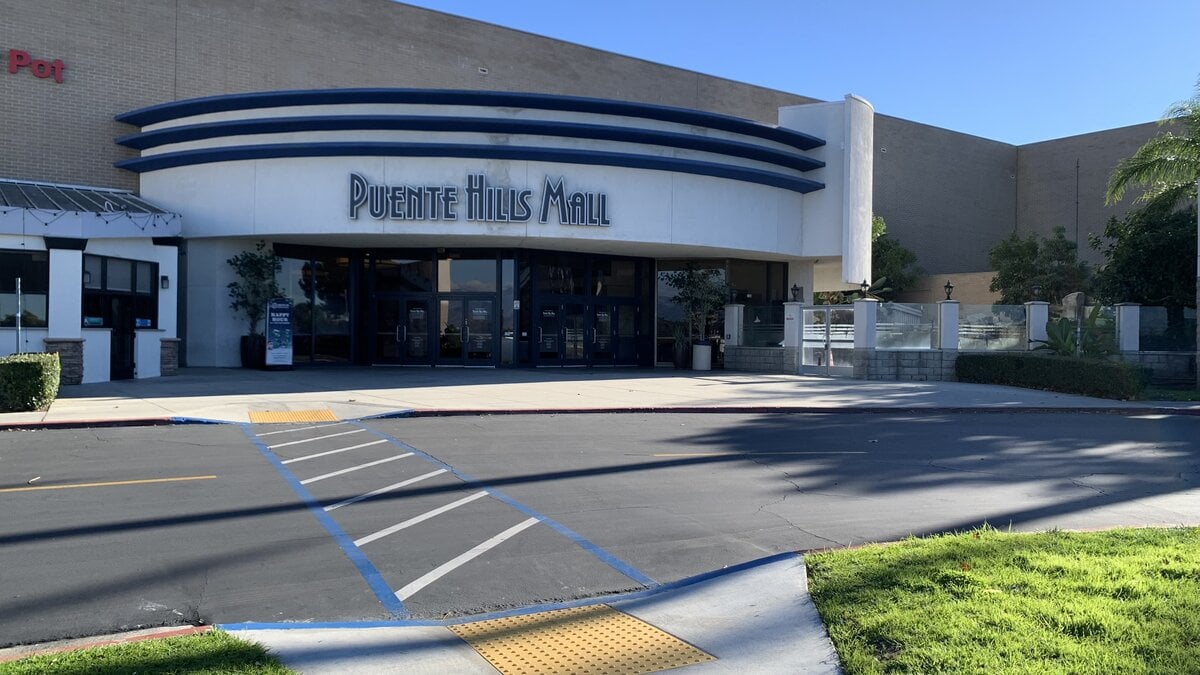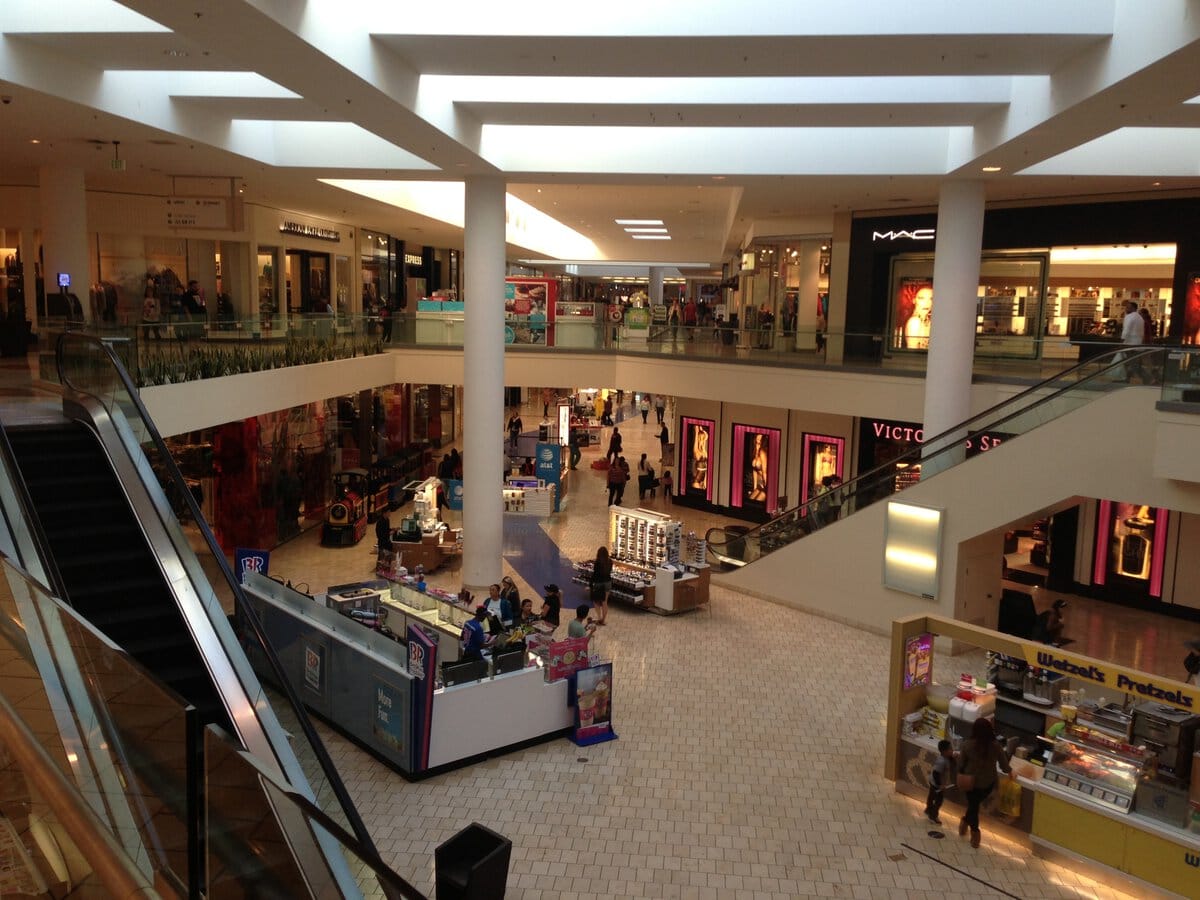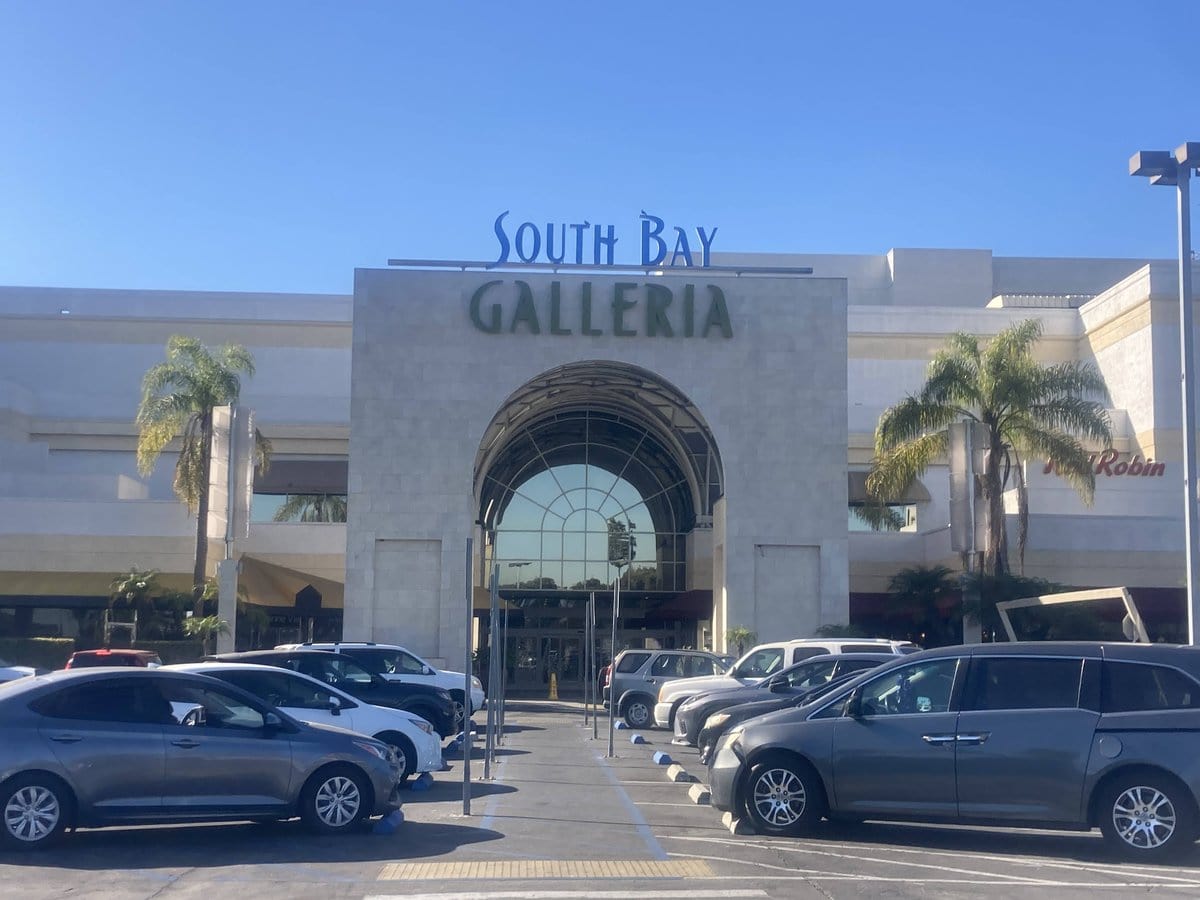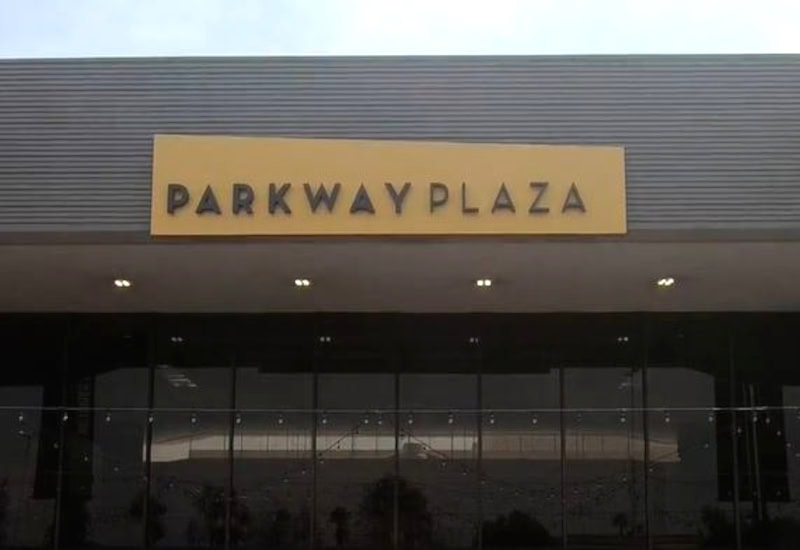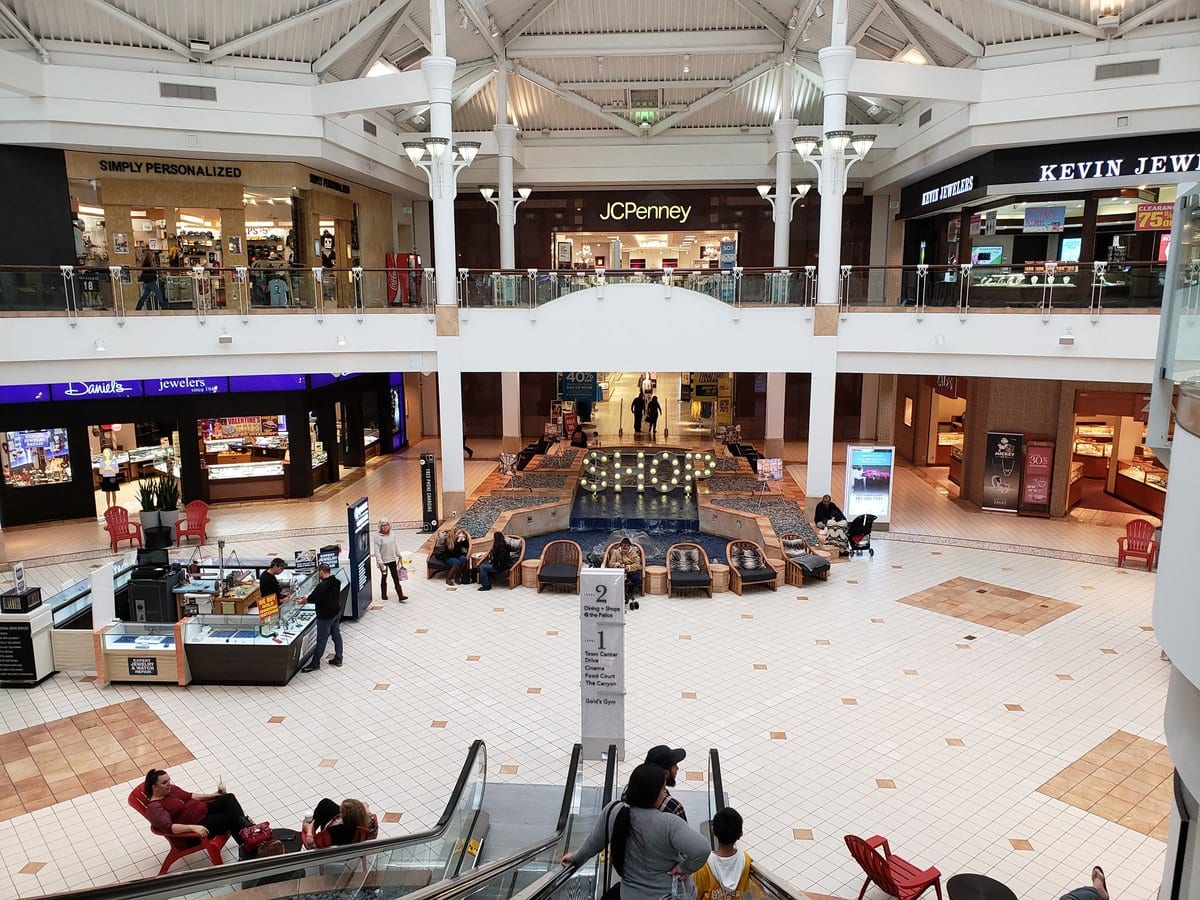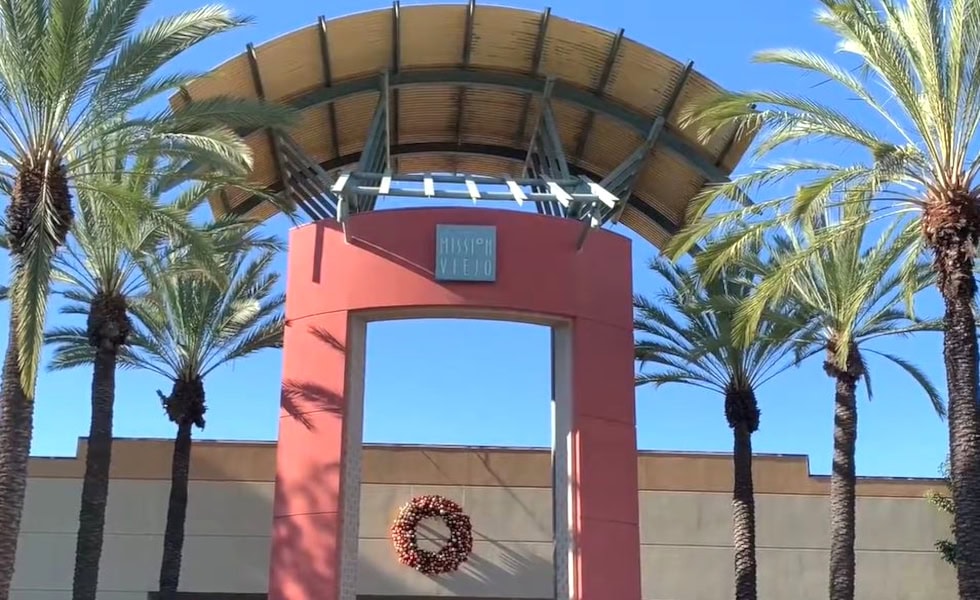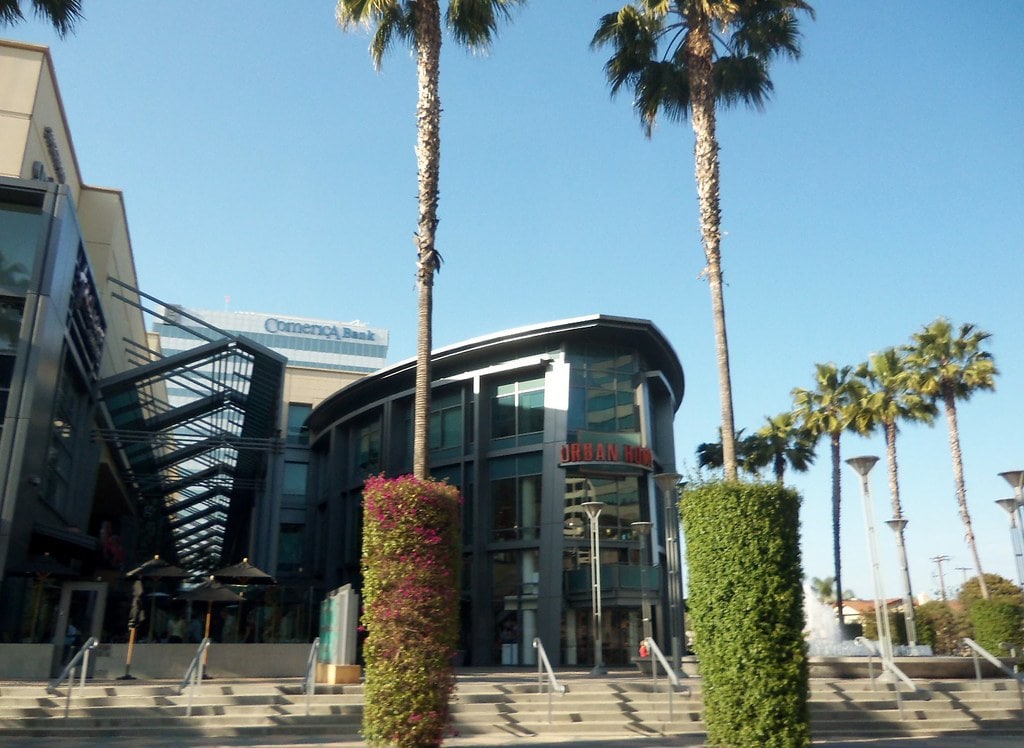Still Fox Hills to Some
Glass is used to catch the light above the old staircase near the mall's center court.
When the sun hit just right, it sharpened the angles of the steel framing and spilled reflections down onto the tiled floor below. Shoppers passed beneath it on the way to May Co. or The Broadway.
Westfield Culver City stands on the same 37-acre site where the Fox Hills Mall opened in 1975.
The name changed, the staircase came down in 2009, and one of the original anchors was torn out entirely.
But some of the bridges are still there, and JCPenney hasn't moved.
The air conditioning hums like it always did. For those looking for things to do in Culver City, California, that hum can still sound like summer.
Original Floorplates and the 1975 Lease Rollout
When the Fox Hills Mall opened on October 6, 1975, it wasn't an off-the-shelf design.
Developed by Ernest W. Hahn, Inc. with Carter Hawley Hale Properties, the layout included three retail levels and 902,500 square feet of enclosed space.
Gruen Associates handled the core architecture, but William L. Pereira Associates took over for The Broadway's design.
That anchor alone came in at 192,470 square feet.
JCPenney delayed its opening until January 14, 1976, but the space had already been built. At launch, the mall included 80 of the planned 131 retail tenants, among them Harris & Frank and Lerner's.
The design introduced angled pedestrian bridges and a now-removed glass-and-steel staircase that linked the interior.
Parking spanned 4,490 stalls, including 2,400 inside a structure. The early mix of department stores and boutique chains gave the mall density and draw.
All of it fit between Sepulveda Boulevard and Slauson Avenue, already busy corridors in mid-1970s Culver City.
Corporate Acquisition and Brand Realignment
The first wave of change came in 1998 when Westfield America, Inc. bought Fox Hills Mall and added it to a growing list of U.S. retail properties.
The transaction placed the Culver City site under the same umbrella as dozens of other regional malls in urban and suburban grids.
Within months, the branding shifted. "Westfield Shoppingtown Fox Hills" appeared on storefront directories, maps, and mall signage.
The term had been used across Westfield's U.S. portfolio, but by 2005, it was already getting phased out.
In June of that year, Westfield removed "Shoppingtown" from its marketing materials nationwide.
For a time, the mall went by "Westfield Fox Hills," keeping a connection to the older name while easing into corporate style.
The rebrand wasn't fully cemented until 2009 when the company dropped "Fox Hills" altogether and reintroduced the site as "Westfield Culver City."
Naming the property after the city followed a larger commercial trend: emphasize place, tie into locality, and let legacy labels quietly retire.
The company also began refining floor layouts and trimming visual elements that no longer matched national design cues.
The original glass-and-steel staircase was removed in 2009 during the remodel, though the distinctive bridges between levels were left alone.
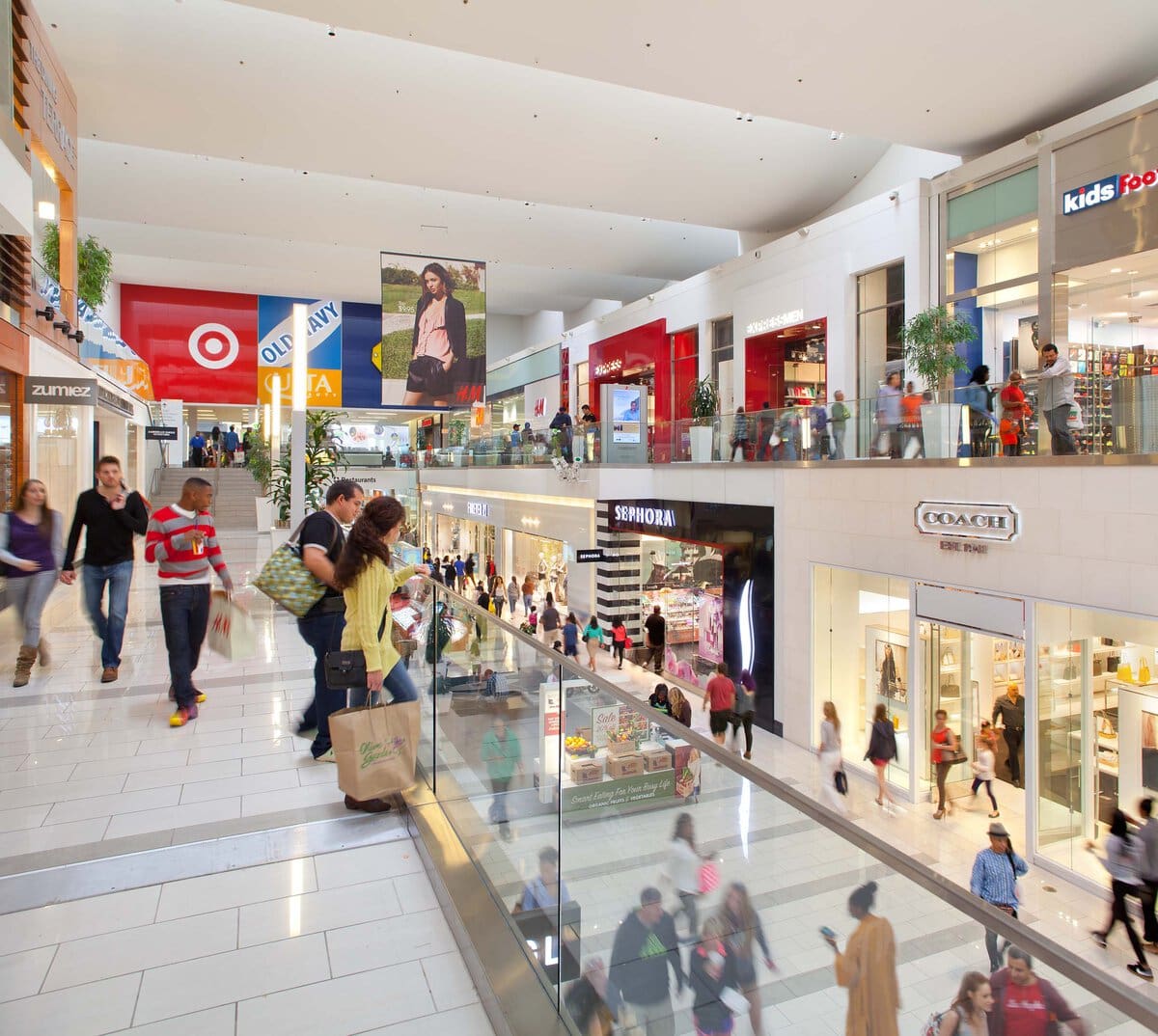
Redevelopment Strategy and Anchor Replacement
Robinsons-May closed its doors at the mall in 2006, and the shell didn't stay long.
The department store had once occupied 147,800 square feet in what was originally May Co.'s footprint.
Westfield tore it down in 2008 and opened a new wing in 2009. This wasn't a facelift or a remodel. It was a rebuild.
The replacement tenants, Target and Best Buy, spoke directly to new shopping patterns.
Target brought foot traffic for groceries, clothing basics, and home goods.
Best Buy, occupying space that had never housed electronics retail before, tapped into appliance and tech buyers.
Both brands offered broader appeal than a single department store label, and both operated outside the traditional seasonal retail calendar.
Their arrival reshaped internal traffic patterns. Shoppers didn't need to pass through the older sections to reach them.
The new wing created an alternate loop through the mall and shifted footfall toward the edge of the original footprint.
Macy's had already taken over The Broadway space in 1996, part of a national merger within Federated Department Stores.
JCPenney stayed where it had always been since opening in January 1976. The anchors changed, but the mall kept adapting its structure to follow the market.
Nordstrom Rack opened at Westfield Culver City in October 2013, taking over a second-level space after relocating from Howard Hughes Promenade.
It runs the brand's off-price model - discounted designer clothing, shoes, and accessories packed into a wide floor plan near Macy's.
Customers come for brand names at markdowns, often finding racks full but moving fast. It's one of the mall's more active storefronts, offering same-day pickup and in-store returns.
Trader Joe's opened in 2015 as part of an outparcel on the Westfield Culver City property, separate from the main mall structure.
The store draws steady foot traffic with its compact layout, rotating product selection, and private-label groceries.
Its presence adds a daily-use retail layer to a site once defined by anchors and apparel, offering fresh produce, frozen staples, and seasonal drops without pulling visitors through the mall's core.
It stays busy, especially on weekends, and its lines often stretch toward the entrance.
Food Court Foot Traffic and the Dining Terrace Format
What used to be a standard mall food court now carries a different kind of weight.
Officially rebranded as the Dining Terrace, the space earned wider attention when Los Angeles Times critic Jonathan Gold called it out for what others missed.
In his review, he didn't talk about décor. He focused on the menu range and the people who came for it.
Positioned between neighborhoods like Baldwin Hills, Ladera Heights, and Inglewood, the mall pulls from overlapping communities that don't all shop the same way.
Gold noted that Fox Hills had always felt more open, more mixed, and more reflective of the city's layered geography.
And the food offerings matched that: Chinese, Japanese, Caribbean, halal, and American basics operating side by side.
The layout helps, too. Tables spill out across a long, window-lit deck. The sound of multiple kitchens rolls over the tile in a low, steady echo.
You'll find quick lunches, sit-down dinners, and everything in between. And while Westfield kept the brand name, the food terrace doesn't lean corporate.
Most vendors are independent, and some are regional chains. It's less about banners and more about what's being served and who's eating it across the table.
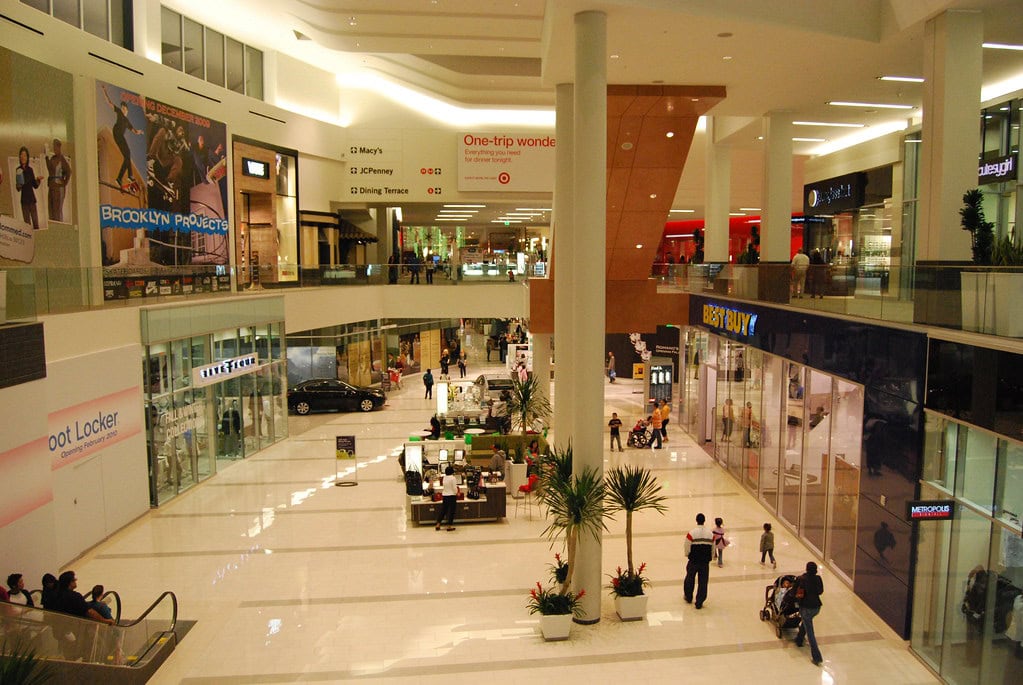
Transit Links, Last-Mile Access, and Bus Route Geometry
Unlike malls built deeper into suburban grids, Westfield Culver City sits close to an established transit hub.
That alone makes it a different kind of retail node in Los Angeles. The property includes a dedicated transit center between Sepulveda Boulevard and Slauson Avenue.
Riders from multiple Culver CityBus and LACMTA lines use it daily.
One route, in particular, shapes access. Line 6 connects Westwood and UCLA to the Metro Green Line Aviation Station, with a stop at the mall.
The route crosses through neighborhoods that don't always share the same amenities, threading together student housing, commercial districts, and older residential pockets.
The stop isn't hidden in the back lot or tucked into a corner. It's just across Marina Freeway, close enough to walk without a second thought.
Shoppers cross under the overpass and head straight in. Workers do the same. No shuttle, no long detour, just a short connection built into the daily flow.
Trader Joe's sits nearby, and for some, that's the first stop before stepping into the mall.
Transit access also changes what kinds of stores can succeed. You'll see more fast casual dining and destination-based retail instead of luxury anchors.
That mix reflects who's coming through the turnstiles, not just who's pulling in from the parking deck.
At Westfield Culver City, the buses shape the floor traffic almost as much as the floor plan itself.
Branded Timing and Retail on a Clock
By June 2025, timing had become the strategy. Shake Shack opened the month with its Dubai Chocolate Pistachio Shake, wrapped in a "Sprinkled with Pride" campaign that ran wall-to-wall through June.
No secondary placement, no soft rollout. It was the storefront's front line, aimed at traffic that didn't need persuading.
Adidas moved next. On June 14, their FIFA Club World Cup tie-in went live, tucked into the store without any mall-wide framing.
No podiums, no buildouts. Just product tied to the match calendar, up front, tight-laced, ready to turn inventory without staging.
Aéropostale launched its Formula 1 capsule in the same window. The release landed directly on racks, was high in color, had no clearance tags, and had no reset. It wasn't merch, it was pacing.
Garage, a new entry, showed up in June listings with no category and no footprint details. That wasn't an accident.
Pop-ins like this had become part of the layout. No banners, no floor plans, just names that arrived, sold, and left on time.
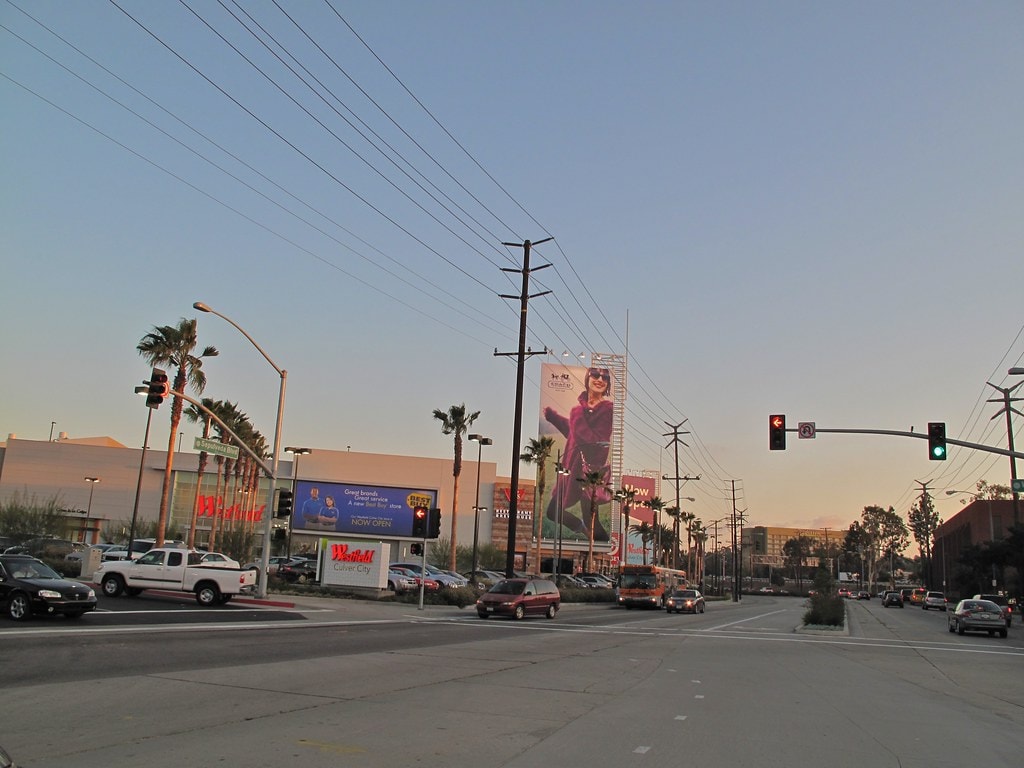
🍀

